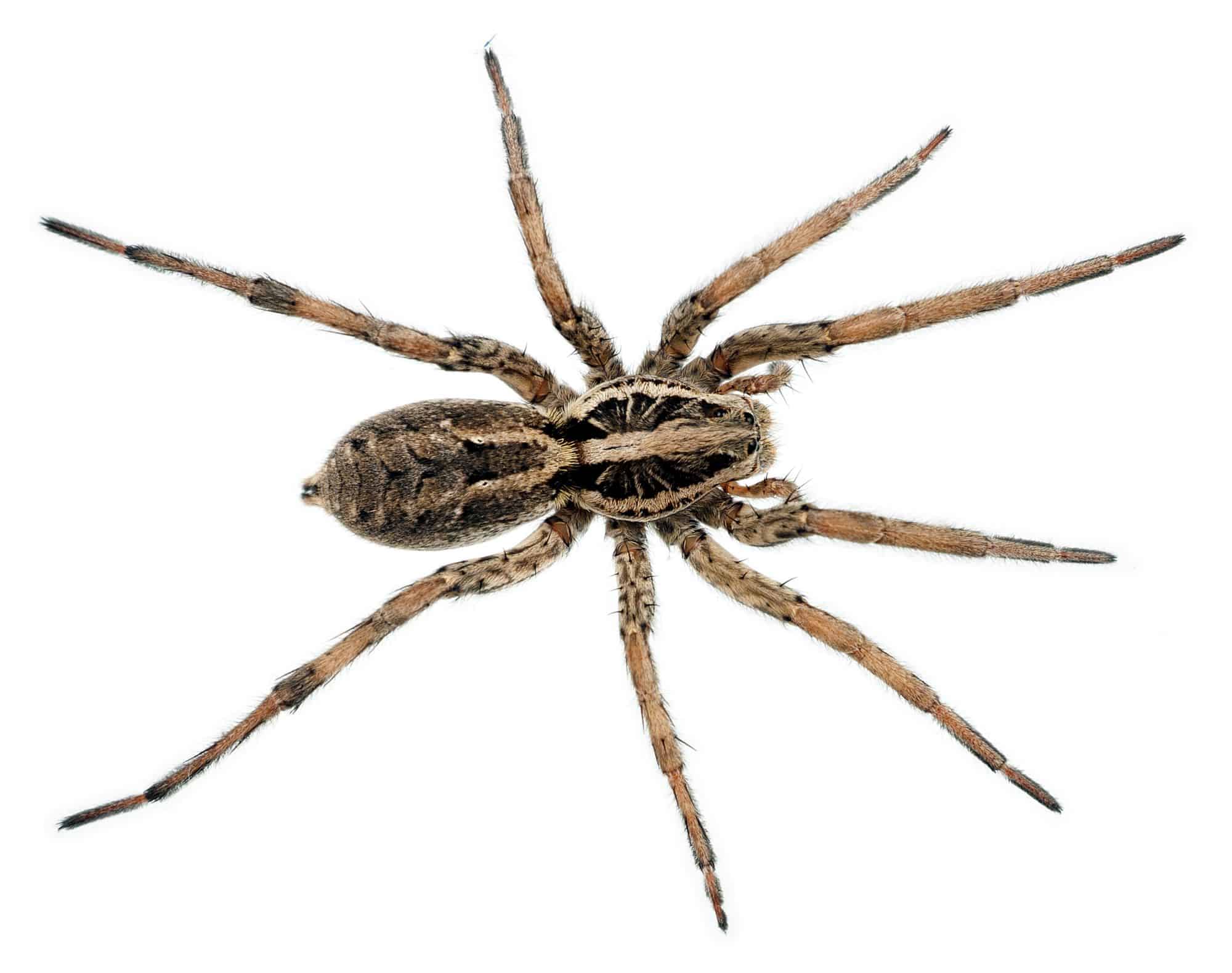
Wolf spiders feed on a variety of insects. The wolf spider is terrestrial and does not build webs. They spend most of their time on the ground but may burrow to some extent. The wolf spider is the largest of the wolf spider species in North America. They are found all over the United States and southern Canada. Contact our specialists today to rid your home of wolf spiders!
| Pest Identification | |
|---|---|
| Recognition | Size: 1 inch Color: Brown-gray to dark brown Body Structure: Features eight legs that are equally as long as its body and eight eyes situated in two rows on its head. Characteristics: The female adult will lay her eggs, around 100 at a time, in a secluded, dark location. She then will spin a silk, globe-like sac around the eggs, which she then attaches to spinnerets on her lower abdomen, carrying the sac with her as she moves. Depending upon environmental conditions, eggs may hatch within 2 weeks or gestation may take several months. When eggs are ready to hatch, the female will tear open the sac, releasing the young. When they are released from the sac, the young climb onto the mother’s abdomen, where she continues to care for them for about a month. Afterwards, the young leave the mother by “ballooning,” which involves releasing a stream of silk from their spinnerets into the air and then allowing the wind to carry them to a new location, or by simply dropping to the ground. The wolf spider, the largest of the species, is known for its speed, heightened sense of touch, and keen sense of sight. Commonly Active: Spring / Summer / Fall |
| Habits | Unlike other spiders, wolf spiders do not nest in webs; rather, they reside in deep burrows under the ground. Wolf spiders are hunters, going after prey at night as opposed to capturing food in a web. The wolf spider can be found burrowing in a number of habitats, from forest floors to around garden shrubs. Wolf spiders tend to be skittish and will scurry away in lieu of biting an aggressor. Likewise, they may rear up on their hind legs, showing their fangs as a defense technique. Rarely do wolf spiders bite unless thoroughly provoked. |
| Prevention | Sealing cracks around your home, as well as caulking gaps around doors, windows, and eaves, may prevent wolf spiders from making their way indoors. More of a nuisance than a dangerous pest, the wolf spider is a natural predator to other more menacing pests such as mosquitoes. However, if you are experiencing a large number of spiders around your home and are having a difficult time positively identifying the species, contact a pest control professional before attempting a do-it-yourself pest control treatment. Find out more about spider control for your home. |

